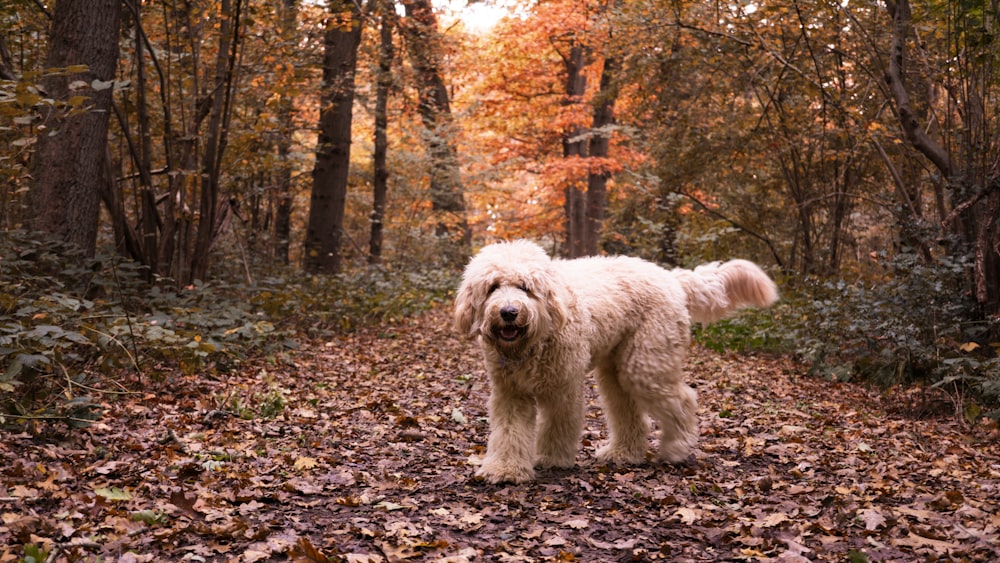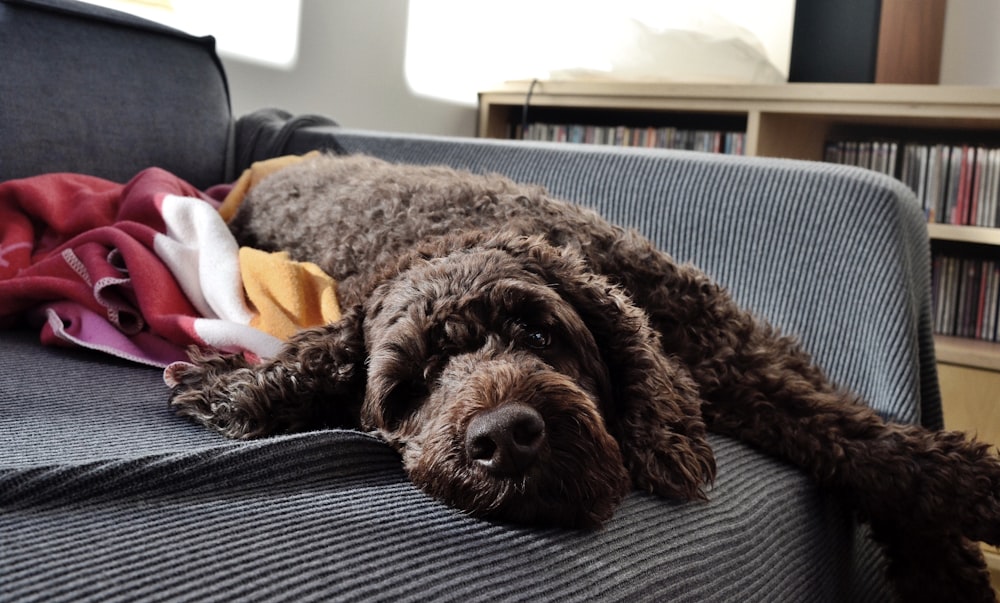How much do you know about the Labradoodle? These happy-go-lucky dogs will pull on your heartstrings with their frolicking antics and heaps of love. To say they are an ideal family dog is an understatement! If you’re interested in adding a Labradoodle to your family, here’s what you need to know.

Where Does the Labradoodle Come From?
The labradoodle is a cross between a Labrador retriever and a poodle. These 50-50 crosses of two different purebred breeds are often called “designer dogs.” Designer dogs are not breeds recognized by official kennel clubs but are still popular options for canine companions nonetheless.
Despite the Doodle’s evident popularity, they have only been around since 1988. Australian dog breeder Wally Conron decided to cross a Labrador retriever with a standard poodle in the hopes of creating a more hypoallergenic guide dog. Labrador retrievers are the most popular breed to serve as guide dogs, but their shedding and dander can trigger those with pet allergies. On the other hand, Poodles have a hypoallergenic coat that does not shed and produces less dander.

What Does a Labradoodle Look Like?
Labradoodles are crosses between two different breeds. As a result, their appearance can vary greatly depending on which traits they inherit from which parent. Firstly, the dog’s adult size depends on what kind of poodle parent is used; poodles come in miniature, medium, and standard sizes. A standard poodle can weigh up to 65 pounds, whereas a medium and miniature might weigh 30 to 45 pounds and 15 to 25 pounds, respectively. The bigger the poodle that breeds with the Labrador, the bigger the resulting Labradoodle.
When it comes to coat colors, we again run into a wide variety of possibilities. Labrador retrievers usually have solid coats of yellow, chocolate, or black. Poodles are generally a solid color but can be cream to chocolate, apricot, black, silver, red, or any shade between those. Because the parent breeds have very different coat textures, the puppies can have wavy, curly, wiry, or straight hair. The wavy coat is the most popular style.
What Is A Labradoodle’s Personality Like?
If you are looking for a watchdog, this is not the dog for you. One of the most well-known characteristics of a Labradoodle is the loving, loyal temperament that they inherit from both breeds. These dogs are friendly and playful, making them great family pets. They work well with other dogs and pets, are very loyal, and bond strongly with their humans; they would not do well living outside of the family home.
How Hard Is It To Train a Labradoodle?
Both poodles and Labrador retrievers are intelligent dogs; they learn quickly and are eager to please their people. This temperament means they are keen to learn.
Consistent training and patience are essential to successfully raising a well-behaved dog, no matter how trainable a dog is. Puppy classes are a great way to start training and socializing your new puppy early on. At a minimum, you should teach your Labradoodle basic obedience commands such as sit, stay, and come. Their sweet, docile nature means they do not respond well to harsh training methods or hard corrections. Instead, use positive reinforcement techniques.
Due to their strong familial ties and curious minds, Labradoodles left alone for long periods can resort to undesirable behaviors. You can mitigate these behaviors by providing access to puzzles and interactive toys to keep them entertained.

How Much Exercise Does A Labradoodle Need?
Labradoodles require at least 30 minutes of vigorous exercise each day to stay healthy both mentally and physically. A bored dog resorts to unwelcome and potentially destructive activities to relieve their boredom. Since Labradoodles come from two working breeds, they need plenty of help relieving that boredom. Though they thrive the best living inside, Labradoodles enjoy activities like hiking and camping with their humans. This breed thrives in contests of agility and obedience.
Do Labradoodles Have Health Problems?
Though a mixed breed like a Labradoodle is less likely to suffer from genetic predispositions from one of their parent breeds, they are susceptible to health problems they can inherit from poodles and labradors.
Hip or elbow dysplasia and eye disease are inherited conditions to which both breeds are susceptible. Labs and poodles are both sensitive to obesity as well, which further aggravates their joint issues. This tendency towards overweight doubly highlights the importance of keeping your Doodle on a regular exercise schedule.
The easiest way to diagnose dysplasia is via a visit to the vet and x-rays. Both conditions can lead to arthritis but are manageable with weight management, joint supplements, medicine, or surgery, depending on the severity of the case.
Progressive Retinal Atrophy, or PRA, is a family of eye diseases involving gradual retina deterioration. Many affected Labradoodles can adapt well to their limited vision over time.
Labradoodles have a life expectancy of 12 or more years.

How Do You Groom a Labradoodle?
The extent of grooming your Labradoodle requires depends on what type of coat your dog has. The shorter, more lab-like coat likely only needs a decent brushing once a week or so. Daily brushing will keep the hair from matting if your Doodle has a longer, curlier coat more reminiscent of a poodle. Dogs with poodle-like coats need a visit to the groomer every 4 to 6 weeks for a trim, too.
The Bernese Mountain Dog’s long, silky coat sheds year-round, though shedding is worse when seasons change. Plan to comb your Berner’s fur at least once a week with a brush to minimize shedding and stay on top of tangles. Also, consider investing in a vacuum best suited for dealing with long pet hair.

Labradoodles On the Rise
There’s a good reason Labradoodles are such a popular family breed. They are playful, loving dogs with a friendly, albeit energetic, disposition. In a Labradoodle, you will find the best combination of an adventure partner ready for anything and a fluffy cuddle buddy combined content to be by your side.
